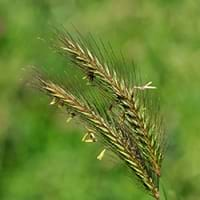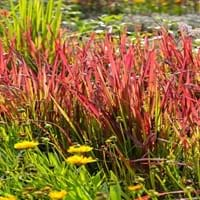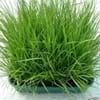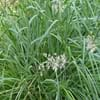Life Span
Perennial
Perennial
Origin
North America, South America, Europe, Southern Africa, Asia
Japan
Types
Not Available
Not Available
Habitat
meadows, Pastures, Wet lands
Moist Soils, River side, yards
USDA Hardiness Zone
Not Available
5-9
AHS Heat Zone
Not Available
9 - 3
Sunset Zone
Not Available
2b, 3a, 3b, 4, 5, 6, 7, 8, 9, 10, 11, 12, 13, 14, 15, 16, 17, 18, 19, 20, 21, 22, 23, 24
Habit
Not Available
Upright/Erect
Minimum Height
Not Available
Minimum Width
Not Available
Flower Color
Yellow Brown
Not Available
Flower Color Modifier
Bicolor
Bicolor
Fruit Color
Not Available
Non Fruiting Plant
Leaf Color in Spring
Green, Light Green, Blue Green, Gray Green
Light Green
Leaf Color in Summer
Light Green
Light Green
Leaf Color in Fall
Not Available
Green, Sienna
Leaf Color in Winter
Not Available
Tan
Leaf Shape
Oblong
Subulate
Plant Season
Not Available
Not Available
Sunlight
Full Sun
Full Sun, Partial Sun
Type of Soil
Loam, Sand
Clay, Loam, Sand
The pH of Soil
Not Available
Acidic, Neutral, Alkaline
Soil Drainage
Well drained
Average
Bloom Time
Spring, Summer
Late Summer
Tolerances
Deer resistant, Drought, Salt
Drought, Salt
Where to Plant?
Ground
Ground
How to Plant?
Seedlings
From Rhizomes, Seedlings
Plant Maintenance
Medium
Medium
Watering Requirements
Keep the ground moist but not water-logged
Average Water Needs, Keep the ground moist but not water-logged
In Summer
Less Watering
Lots of watering
In Spring
Moderate
Moderate
In Winter
Lots of watering
Average Water
Soil pH
Not Available
Acidic, Neutral, Alkaline
Soil Type
Loam, Sand
Clay, Loam, Sand
Soil Drainage Capacity
Well drained
Average
Sun Exposure
Full Sun
Full Sun, Partial Sun
Pruning
No pruning needed in the early stages, Remove damaged leaves, Remove dead branches, Remove dead leaves
Prune once the plant is tall enough, Remove damaged leaves, Remove dead branches, Remove dead leaves
Fertilizers
avoid high rate of nitrogen in spring, Nitrogen
can go long without fertilizers, Doesn't require fertilization when grown in rich soil
Pests and Diseases
Fungal Diseases, Head smut, Leaf rust, Stem rot
Not Available, Red blotch
Plant Tolerance
Deer resistant, Drought, Salt
Deer resistant, Drought, Full Sun, Shade areas
Flowers
Not Available
Insignificant
Flower Petal Number
Single
Single
Edible Fruit
Not Available
No
Foliage Texture
Fine
Medium
Foliage Sheen
Matte
Matte
Attracts
Bees, Birds, Butterflies
Not Available
Allergy
Not Available
Not Available
Aesthetic Uses
Ground Cover
Ground Cover
Beauty Benefits
Improve skin condition
Not Available
Edible Uses
No
Not Available
Environmental Uses
Erosion control, Food for animals, soil stabilisation
Air purification
Medicinal Uses
Not Available
Not Available
Part of Plant Used
Seeds
Leaves, Root
Other Uses
Food for animals
Traditional medicine, Weaving into Mats and Bags
Used As Indoor Plant
No
Yes
Used As Outdoor Plant
Yes
Yes
Garden Design
Cutflower, Dried Flower/Everlasting, Edible, Wildflower
Not Available
Botanical Name
Hordeum brachyantherum
IMPERATA cylindrica
Common Name
Meadow Barley
Japanese Blood Grass
In Hindi
meadow barley
Japanese Blood Grass
In German
Wiese Gerste
Japanische Blut Grass
In French
orge prairie
Herbe de sang japonais
In Spanish
cebada prado
Hierba de sangre japonesa
In Greek
λιβάδι κριθάρι
Ιαπωνικά Grass αίματος
In Portuguese
cevada prado
Grama sangue japonês
In Polish
łąka jęczmienia
Japoński Krew Trawa
In Latin
pratum hordei
Sanguinem Italica Grass
Phylum
Magnoliophyta
Magnoliophyta
Class
Liliopsida
Liliopsida
Order
Cyperales
Cyperales
Clade
Angiosperms, Commelinids, Monocots
Angiosperms, Commelinids, Monocots
Tribe
Not Available
Not Available
Subfamily
Not Available
Not Available
Number of Species
Not Available
Not Available
Season and Care of Meadow Barley and Japanese Blood Grass
Season and care of Meadow Barley and Japanese Blood Grass is important to know. While considering everything about Meadow Barley and Japanese Blood Grass Care, growing season is an essential factor. Meadow Barley season is Not Available and Japanese Blood Grass season is Not Available. The type of soil for Meadow Barley is Loam, Sand and for Japanese Blood Grass is Clay, Loam, Sand while the PH of soil for Meadow Barley is Not Available and for Japanese Blood Grass is Acidic, Neutral, Alkaline.
Meadow Barley and Japanese Blood Grass Physical Information
Meadow Barley and Japanese Blood Grass physical information is very important for comparison. Meadow Barley height is Not Available and width Not Available whereas Japanese Blood Grass height is 60.00 cm and width 30.00 cm. The color specification of Meadow Barley and Japanese Blood Grass are as follows:
Meadow Barley flower color: Yellow Brown
Meadow Barley leaf color: Green, Light Green, Blue Green and Gray Green
Japanese Blood Grass flower color: Not Available
- Japanese Blood Grass leaf color: Light Green
Care of Meadow Barley and Japanese Blood Grass
Care of Meadow Barley and Japanese Blood Grass include pruning, fertilizers, watering etc. Meadow Barley pruning is done No pruning needed in the early stages, Remove damaged leaves, Remove dead branches and Remove dead leaves and Japanese Blood Grass pruning is done Prune once the plant is tall enough, Remove damaged leaves, Remove dead branches and Remove dead leaves. In summer Meadow Barley needs Less Watering and in winter, it needs Lots of watering. Whereas, in summer Japanese Blood Grass needs Lots of watering and in winter, it needs Average Water.





